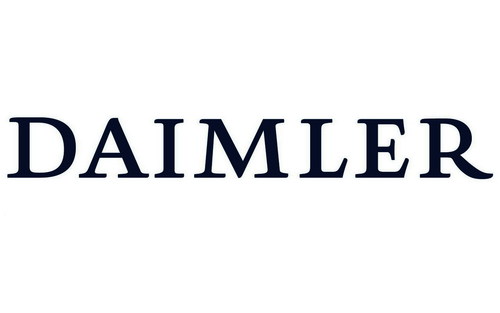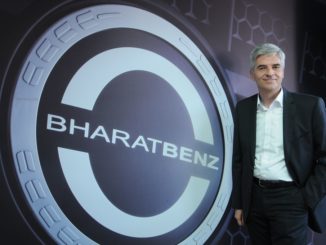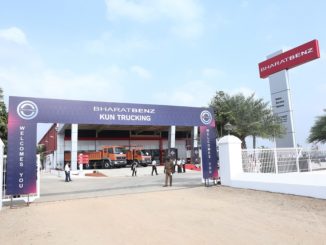- More than 55,000 BharatBenz trucks on Indian roads – double-digit market share in recent months, #3 position in HDT extended.
- Significant growth expected in 2017; expansion of manufacturing output with two-shift operations.
- Introduction of Euro-V ready medium-duty trucks showcases fast track to improve air quality beyond BS-IV levels.
Chennai – Marking an unprecedented ramp-up in India’s commercial vehicle industry, Daimler India Commercial Vehicles (DICV) celebrates the fifth anniversary of the market launch of BharatBenz trucks. Since September 2012, the brand has continuously advanced despite adverse conditions such as an overall industry downturn or multiple market distortions in 2016. More than 55,000 trucks have been delivered to customers across India.
Mr. Marc Llistosella, Head of Daimler Trucks Asia: “Our strategic aim was to give Daimler Trucks a strong footprint in India with its immense growth potentials. In just five years, we have firmly established BharatBenz as an aspirational brand in the world’s toughest commercial vehicle market. We thank our loyal customers and partners for making this unprecedented ramp-up happen with us.”
In the current year 2017, DICV expects to achieve significant growth with BharatBenz. For the first time, the brand progressed into double-digit market share in recent months, based on strong momentum gained with the BS-IV transition.
Mr. Erich Nesselhauf, Managing Director and CEO, Daimler India Commercial Vehicles: “We continue on our sustainable growth track with BharatBenz. Customer demand has been particularly strong in the 16-49 tonnes segment, further extending our position as the clear number three in heavy-duty trucks. We have thus taken the next step and moved to two-shift operations at our manufacturing plant.”
Reflecting persistent strong order intake, DICV decided to add a second shift at its truck plant in Oragadam near Chennai. The increase in output will also cater to expected further growth in DICV’s export business, in which the company has sold more than 10,000 trucks since 2013 and will serve 40 markets by the end of the year.
Fast track to air quality improvements: BharatBenz introduces Euro-V ready medium-duty trucks
To commemorate its fifth anniversary in the Indian market and to illustrate potentials to achieve further air quality improvements quickly, BharatBenz handed over its first Euro-V ready medium-duty trucks to customers. Said Mr. Erich Nesselhauf: “BharatBenz will continue to push the limits of India’s commercial vehicle industry. We led the transition to the BS-IV standard, and we are proud to hand over to customers Euro-V ready trucks today. Improvements of air quality beyond the BS-IV levels can be achieved immediately.”
In line with the Euro-V emissions standard, nitrogen oxide (NOx) emissions are reduced by more than 40 percent compared to BS-IV. Nitrogen oxides are considered to be a major source of air pollution in high-traffic metro areas which leads to respiratory diseases and other negative impacts on people and environment.
BharatBenz – made in India, made for India
The BharatBenz brand is tailored for the Indian market and its demanding customer requirements by Daimler AG, the world’s leading CV manufacturer with a global reach. First unveiled in February 2011, it celebrated its market launch in September 2012. Soon featuring a full-fledged product portfolio in the medium- and heavy-duty segments, the brand crossed the first major milestone of 10,000 units in April 2014 and has further accelerated its growth from there.
With the refresh of the medium-duty range in 2016 and the all-new heavy-duty range in 2017, BharatBenz updated its entire truck portfolio within a short span to give customers even more value for their money. Less than five years after its market entry, more than 55,000 BharatBenz trucks were handed over to customers, an unprecedented ramp-up in the Indian CV industry. BharatBenz products are sold and serviced through a pan-Indian network of more than 130 touchpoints which is continuously expanded further also beyond the tier-2 and tier-3 cities.


